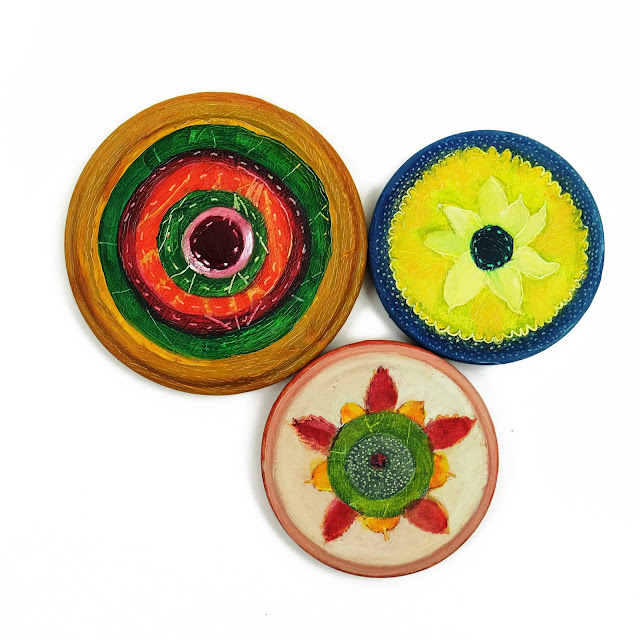A bit about some heads:
Yesterday I revisited 'The Ancestors' in the corridor between what I will always think of as the Museum of Mankind (now part of the Royal Academy) and the Royal Academy. Was at the RA for a discussion between Mary Beard, Cathie Pilkington and Alison Wilding about the exhibit and arrived early so I thought I should see Lucian Freud's portraits upstairs first - so by the end of the morning my head was full of heads;
here's an article about the Freud exhibition. Was a fleeting visit and I might or might not go back to have a proper look.
'The Ancestors' I will rave about. Think it's finishing any day now so I hope you managed to see it - if not there are many photographs and probably some videos online. Curated by Cathie Pilkington RA and Alison Wilding RA, It consists of busts, mostly taken from the RA collection and exhibited together, most facing forward but the odd one or two backwards or to the side, at different heights on ramshackle looking plinths arranged in a rectangularish block - you look at them and they look at you as you pass; you can pass either side as the corridor (or to give it it's full name: The Ronald and Rita McAulay Gallery) splits into two channels there; but I and many others stopped and looked properly.
Here's some details from the RA website, including information about specific busts.
Over 4000 people responded by leaving a drawing. I'm trying to sum up what worked so well for me (partly in order to learn some lessons about how to encourage people to stop and engage):
lightness of touch - the exhibit didn't feel like it wanted to labour a point - although it was clearly full of intelligent thought.
lack of writing right next to the exhibits - was all on the wall facing it (and not too much of it) - apparently the labels from storage were originally left on but it meant people immediately began reading those instead of responding to the piece so they were removed.
informal and various plinths - I was particularly struck by the odd old metal filing cabinet being used as a plinth amongst breeze block plinths and some painted wood ones - because the arrangement of the busts was so clear and decisive the haphazardness of the plinths felt important and purposeful - took away some of the pomposity and also simply added some colour.
clever, clear engagement activity that needed no extra input and led to great results - people were invited to make their own pencil drawing and pin it to the growing board of pictures.
I'm so pleased I went to the talk as it clarified some of my thoughts about the exhibition and it was great to get some background and an insight into the way the artists worked together, many of the decisions (like deciding against leaving the storage labels on and the use of filing cabinets as plinths) came about at the last minute. The only piece borrowed (ie not from the RA collection) was the big 'Goggle Head' by Dame Elizabeth Frink RA - and initially it was thought that all of the sculptures would be shown on Frink style breeze block plinths but they would have been too heavy for the floor.
All in all very wonderful and loved listening to Cathie Pilkington and Alison Wilding discussing their thoughts and their seemingly different approaches that ultimately seem to spring from the same pool.



















